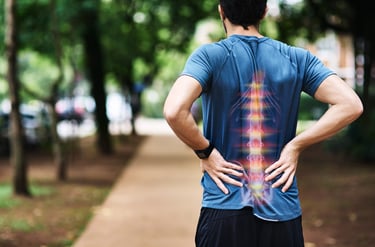eStoreRx™
Online Supplement Dispensary
eStoreRx™ is an easy direct-to-patient ordering & fulfilment program for lifelong wellness.
For over 40 years, Biotics Research Corporation has revolutionized the nutritional supplement industry by utilizing “The Best of Science and Nature”. Combining nature’s principles with scientific ingenuity, our products magnify the nutritional
eStoreRx™ is an easy direct-to-patient ordering & fulfilment program for lifelong wellness.
Biotics Research is proud to expand our commitment to education with the Wellness Unfiltered Pro Podcast. Each episode delves into key health topics and the clinical applications of our premier products. Through candid, insightful conversations, our team offers practical guidance to keep you informed and empowered as a healthcare professional.
December 16 2025
A three-year parallel-group trial, known as Prevención con Dieta Mediterránea-Plus (PREDIMED-Plus), details the results of a secondary analysis of a r...
 Osteoporosis is one of the most prevalent skeletal system diseases. It causes a decrease in bone mass and microarchitectural changes in bone tissue, resulting in lower bone resistance and susceptibility to fracture. In fact, it is thought to be responsible for approximately 1.5 million fractures annually.
Osteoporosis is one of the most prevalent skeletal system diseases. It causes a decrease in bone mass and microarchitectural changes in bone tissue, resulting in lower bone resistance and susceptibility to fracture. In fact, it is thought to be responsible for approximately 1.5 million fractures annually.
As we know, bones are a living part of the structure of the body, and they are constantly breaking down and replenishing themselves. Bone growth occurs to create new strong, resilient tissue while old bone tissue is broken down. But if the two processes get out of balance, there may be a progressive reduction in bone density over time.
Researchers have found that bone density is a direct reflection of the balance between the parasympathetic and sympathetic modes, so stress plays a key role in the relationship. This is because bone mass accrual is inhibited by sympathetic signaling. And scientists have recently found a probable counter mechanism that antagonizes the skeletal sympathetic tone, strongly favoring bone mass accrual.
Naturally, stress doesn’t necessarily have to be mental or emotional or be directly related to the nervous system; it can also be physiological and biochemical. In fact, inflammation is one of the ways that the relationship can manifest in the body.
Established research points to the many ways in which inflammatory cytokines shift the balance between osteoblast activity and osteoclast activity. One of the main culprits of driving the inflammation that can erode bone density is interleukin 6 (IL-6), a protein that stimulates immune responses, such as inflammation, and is commonly released as a result of exposure to lipopolysaccharide (LPS), another inflammation inducer. LPS forms part of the range of microbial products found in the blood. However, when the body is overexposed to LPS, perhaps due to intestinal hyperpermeability, a more aggressive surge of interleukin-6 can occur.
A small in vivo study found that IL-6 is a major predictor of postmenopausal bone loss. One hundred and thirty-seven postmenopausal German women between 52 and 80 years of age at baseline were tested for serum IL-6 and other biochemical parameters. Using dual x-ray absorptiometry, their bone mineral density at the hip and lumbar spine were also measured, along with a medical history and anthropometric measures. The results showed that serum IL-6 was the single most important predictor of femoral bone loss, accounting for up to 34% of the total variability of change in bone density among women up to 10 years past menopause. The model used predicted an annual 1.34% decrease in total hip density per log unit increase in serum IL-6. Similar studies on women show similar results, as well as a weaker yet significant connection between bone density loss and other inflammatory markers such as interleukin 1 and TNF-alpha.
Animal studies using mice with glucocorticoid-induced osteoporosis have also confirmed high levels of bone marrow stromal cell IL-6 secretion in osteoporotic mice compared with normal control.
This dynamic can be a particular problem in people with leaky gut, which can increase levels of LPS in the bloodstream. The detection of antibodies against LPS has been shown to indicate macromolecule-sized endotoxin infiltration through the intestinal barrier into the systemic circulation.
To help patients with permeability problems, many practitioners focus on addressing underlying nutritional or other factors. Here are some examples:
A variety of studies also show a possible genetic marker for osteoporosis may affect the prevalence and progression of the disease. Estimates suggest that 40-80% of variation in bone density is due to genetic factors. Other factors not listed above include the dietary calcium, exercise and estrogen status in women. However, the link between dietary calcium and osteoporosis - and even calcium plus vitamin D supplementation - is still unclear. The inflammation connection may very well help piece together the complex osteoporosis puzzle.
Related Biotics Research Products:
Submit this form and you'll receive our latest news and updates.
*These statements have not been evaluated by the Food and Drug Administration. This product has not intended to diagnose, treat, cure, or prevent any disease.
Proposition 65 Warning
© 2025 Biotics Research Corporation - All Rights Reserved
Submit your comment